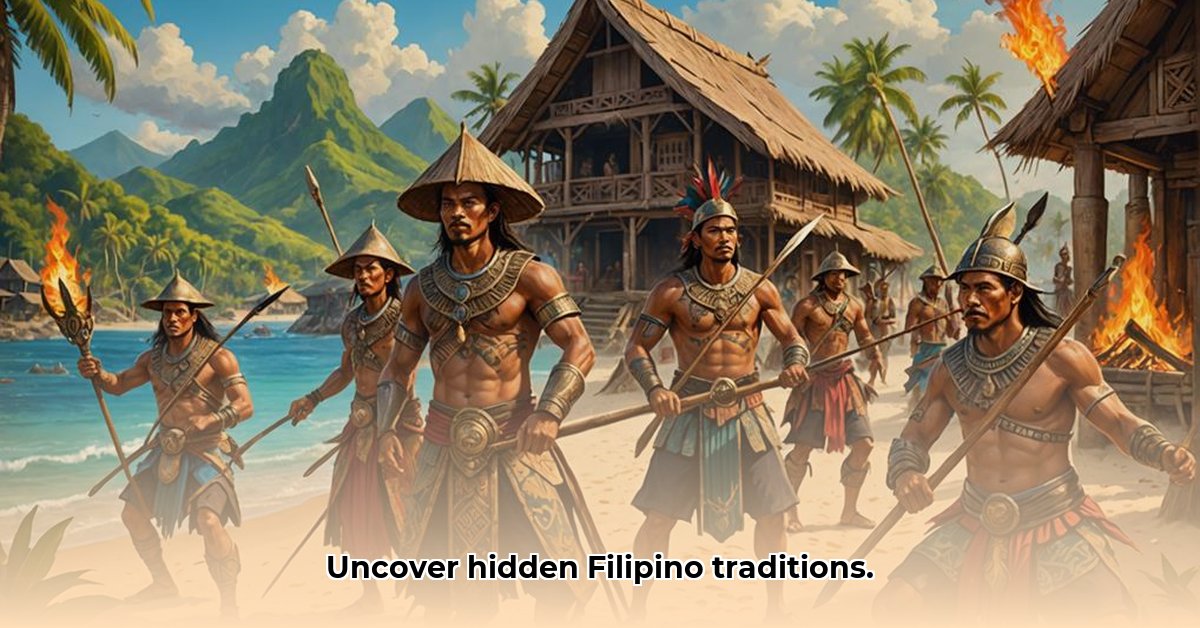
A Tapestry Woven Through Time
Imagine the vibrant chaos of a Filipino fiesta: the air thick with the scent of adobo (a savory stew), the rhythmic beat of drums and gongs mingling with joyous laughter, families gathered, their bonds as strong as the ancient traditions they celebrate. This isn't just a spectacle; it's a window into the soul of the Philippines, a nation where history, vibrant celebrations, and strong community intertwine to create a culture unlike any other. For a deeper dive into Filipino culture, check out this helpful resource: Filipino Culture. This journey delves into the heart of Filipino traditions, from their historical roots to their modern expressions, revealing the enduring spirit of bayanihan (community spirit) and pakikisama (getting along) that shapes the Filipino identity. How has this rich tapestry evolved, and what can we learn from its enduring power?
A History Forged in Cultural Fusion
Filipino culture is a testament to the power of synthesis. Long before colonial influences, indigenous communities flourished, each with unique traditions and beliefs. The arrival of the Spanish in the 16th century profoundly reshaped the landscape, introducing Catholicism and leaving an enduring mark on architecture, language, and social structures. Subsequently, American influence further molded the nation, impacting education, technology, and governance. However, these influences didn't simply overwrite existing traditions; they blended, creating a unique cultural mosaic. The Catholic fiestas, imbued with indigenous rituals, are a prime example – a fascinating fusion of beliefs and practices. This historical layering is not merely a chronicle of events; it’s the very essence of Filipino identity, a vibrant blend that continues to evolve.
Family: The Heart of Filipino Life
In Filipino society, the family is not just a nuclear unit; it’s an expansive network, embracing grandparents, aunts, uncles, and cousins – a powerful support system that profoundly shapes individual lives and collective decisions. This close-knit structure prioritizes familial needs, fostering deep loyalty and a strong sense of interconnectedness. Family isn't just a social construct; it's the bedrock of Filipino society, influencing everything from economic decisions to personal relationships. This powerful sense of family is echoed in various aspects of Filipino life, forming a central pillar of their cultural identity. It’s a testament to the enduring power of kinship ties in a rapidly changing world.
Bayanihan: Community in Action
Bayanihan is more than a word; it's a way of life. This uniquely Filipino concept embodies the spirit of communal collaboration. Envision an entire village working together to move a house, assist a neighbor in need, or celebrate a significant event. This collaborative effort, this shared responsibility, is the essence of bayanihan. It’s a powerful testament to the strong community bonds that define Filipino culture. But bayanihan isn't confined to grand gestures; it manifests in everyday interactions, fostering a strong sense of unity and shared purpose – a testament to the enduring human need for connection and mutual support.
Pakikisama: The Art of Harmony
Pakikisama, or the art of getting along, is a cornerstone of Filipino social interaction. It prioritizes harmonious relationships over direct confrontation, emphasizing diplomacy and understanding. While some might interpret this as avoidance, it's actually a sophisticated approach to conflict resolution, prioritizing smooth social dynamics and maintaining peaceful coexistence. This emphasis on harmony, while subtle, significantly shapes social interactions and contributes to the overall social fabric of the Philippines. It’s a reflection of a culture that values relationships and consensus-building above all else.
Religious Traditions: A Blend of Faiths
The Philippines is predominantly Catholic, a legacy of Spanish colonialism. However, indigenous animistic beliefs persist, interwoven with Catholic practices, resulting in a unique religious landscape. Simbang Gabi, the nine dawn masses before Christmas, perfectly embodies this beautiful fusion, blending ancient traditions with Catholic devotion. Similarly, Araw ng mga Patay, All Saints’ Day, showcases a vibrant celebration of remembrance, integrating elements from both indigenous and Catholic beliefs. This syncretism isn't simply the coexistence of different faiths; it's a dynamic interplay, a living testament to the adaptability and resilience of Filipino culture.
Festivals and Celebrations: Expressions of Joy
Filipino festivals, from the grand fiestas tied to local patron saints to the exuberant Christmas celebrations of Noche Buena, are more than mere celebrations; they're vibrant expressions of community spirit. These events, bursting with music, dance, food, and colorful processions, strengthen social bonds, preserve cultural heritage, and boost local economies. They’re about more than just revelry; they’re a reminder of the enduring strength of Filipino community and their deep connection to their shared history. Each fiesta, each celebration, is a unique window into the diverse tapestry of Filipino life.
Unique Customs: Reflections of Values
Simple customs often hold profound cultural meaning. Pagmamano, the act of pressing one's forehead to the hand of an elder, exemplifies respect for seniority and the importance of familial hierarchy. Kamayan, the practice of eating with one's hands, fosters a sense of shared experience and togetherness. These seemingly small gestures reveal the depth of Filipino values—respect, community, and shared heritage—all woven into the very fabric of their daily lives. These traditions are not merely rituals; they’re living representations of the Filipino way of life.
Filipino Culture in the Modern World: Adapting and Thriving
Filipino culture is not static; it's a dynamic entity constantly adapting to globalization and technological advancements. While core values like bayanihan, family ties, and the vibrancy of fiestas endure, they are reinterpreted and reimagined in the context of modernity. This ongoing evolution showcases the resilience and adaptability of Filipino culture, its ability to embrace change while preserving its unique identity. This dynamic interplay between tradition and modernity is crucial to understanding contemporary Filipino identity.
Three Pivotal Points:
- The deep historical influences shaping Filipino culture, resulting in a unique blend of indigenous, Spanish, and American elements.
- The importance of family, bayanihan, and pakikisama in structuring Filipino society and interactions.
- The dynamic interplay between traditional practices and modern adaptations, showcasing the resilience and evolving nature of Filipino culture.